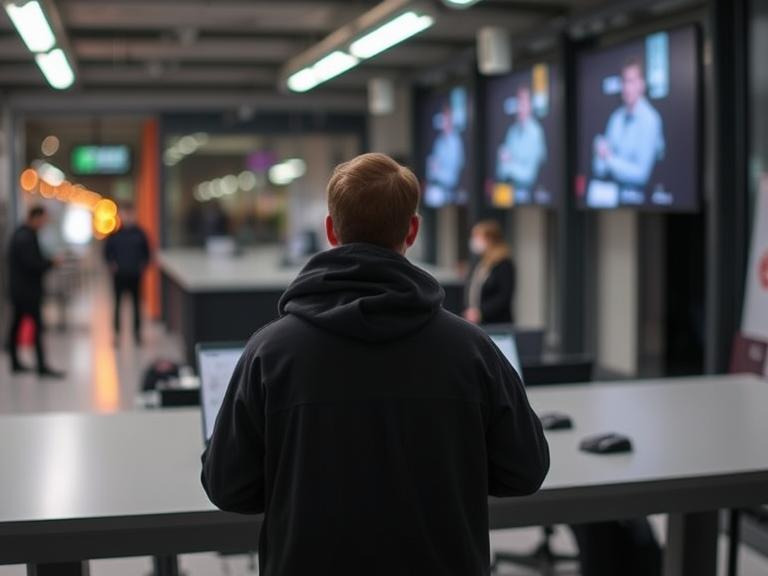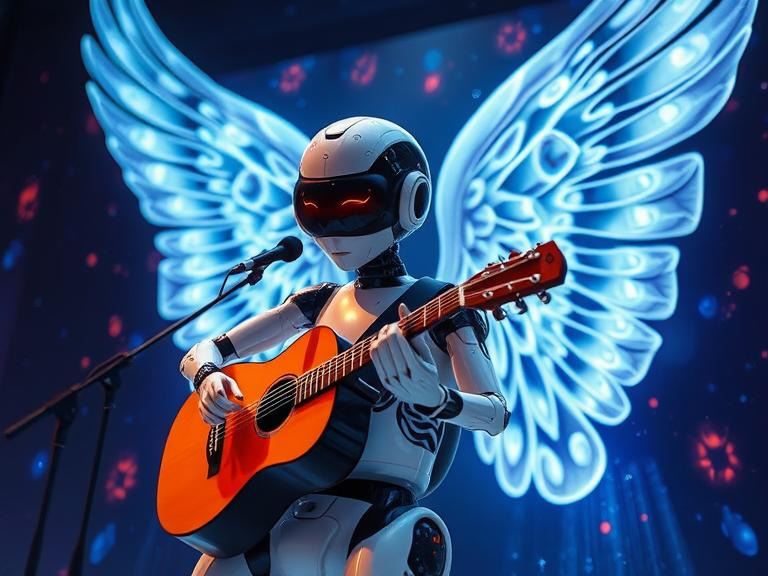The world of work is undergoing a seismic transformation. By 2030, artificial intelligence (AI) and automation will have reshaped industries, redefined roles, and rewritten the rules of economic participation. While fears of mass job displacement dominate headlines, the future is not a dystopian tale of human obsolescence. Instead, it’s a story of adaptation, creativity, and collaboration—one where humans and machines co-evolve to unlock unprecedented productivity and innovation.
This blog post explores how AI and automation will disrupt traditional industries, create entirely new job categories, and demand a workforce skilled in adaptability, emotional intelligence, and creative problem-solving. We’ll also examine the ethical and societal challenges of this transition and propose strategies for thriving in the AI-augmented workplace.

1. The AI Revolution: A Historical Perspective
From Steam Engines to Neural Networks
Every industrial revolution has redefined work. The first mechanized agriculture, the second electrified factories, and the third digitized information. The fourth—powered by AI, robotics, and the Internet of Things (IoT)—is unique in its speed and scope. Unlike past shifts, which primarily affected manual labor, AI targets cognitive and routine tasks across sectors.
By 2030, 30% of all tasks in advanced economies will be automated, according to McKinsey. Yet, history shows that technology creates more jobs than it destroys. For instance, ATMs didn’t eliminate bank tellers; they shifted their roles toward customer service. Similarly, AI won’t replace humans—it will redefine their value.
2. Industry Disruption: Sectors Transformed by AI
A. Manufacturing and Logistics
- Smart Factories: AI-driven robots collaborate with humans on assembly lines, adjusting workflows in real time. Companies like Tesla use “lights-out” factories where machines build machines, reducing production costs by 40%.
- Autonomous Supply Chains: Self-driving trucks and AI-powered inventory systems (e.g., Amazon’s Kiva robots) slash delivery times and errors. By 2030, 70% of warehouses will be fully automated.
Case Study: BMW’s Human-Robot Teams
BMW’s Spartanburg plant employs AI robots that learn from human workers’ movements. These bots handle repetitive tasks like welding, while humans focus on quality control and innovation. Result? A 25% productivity boost and zero layoffs.
B. Healthcare
- Diagnostic AI: Tools like IBM Watson Health analyze medical records and imaging to assist doctors in diagnosing rare conditions.
- Robotic Surgery: Machines like the da Vinci Xi perform minimally invasive procedures with precision, reducing recovery times.
C. Finance
- Algorithmic Trading: AI models predict market trends and execute trades in microseconds, controlling 80% of stock market activity by 2030.
- Personalized Banking: Chatbots like Erica (Bank of America) manage budgets, detect fraud, and offer tailored financial advice.
D. Retail
- Cashierless Stores: Amazon Go’s AI cameras track purchases, eliminating checkout lines.
- Hyper-Personalization: AI analyzes browsing habits to recommend products, increasing sales by 35% for retailers like Sephora.
3. Job Displacement vs. Job Creation: The Dual Reality
The Automation Paradox
While AI will displace 85 million jobs globally by 2025 (World Economic Forum), it will create 97 million new roles—many unimaginable today. The key is understanding which jobs will vanish, which will evolve, and which will emerge.
Jobs at Risk
- Routine Cognitive Roles: Data entry, paralegals, telemarketers.
- Predictable Manual Work: Truck drivers, warehouse pickers, assembly line workers.
Jobs on the Rise
- AI Trainers: Teaching algorithms to interpret cultural nuances or ethical guidelines.
- Robot Ethics Auditors: Ensuring autonomous systems comply with human rights standards.
- Virtual Reality Architects: Designing immersive workspaces for remote teams.
Case Study: The Rise of the “AI Whisperer”
In 2028, LinkedIn reported a 450% surge in roles like “Prompt Engineer”—specialists who craft precise instructions for generative AI tools like ChatGPT. These professionals bridge the gap between human intent and machine output, commanding salaries over $200,000.
4. The Skills of the Future: Adaptability, Creativity, and Beyond
The Death of the “Job for Life”
By 2030, the average worker will change careers five times. Technical skills will have a half-life of 2–3 years, making adaptability the ultimate survival tool.
Top Skills for 2030
- Adaptability: Pivoting between roles, tools, and industries.
- Creativity: Solving novel problems AI can’t anticipate.
- Emotional Intelligence (EQ): Managing teams, negotiating, and empathizing.
- Digital Literacy: Understanding AI basics, data analytics, and cybersecurity.
- Interdisciplinary Thinking: Merging tech with humanities (e.g., ethicists in AI labs).
Case Study: Google’s “Skills-First” Hiring
Google now prioritizes skills over degrees. Its Career Certificates program trains people in data analytics, UX design, and AI engineering—fields where demand outstrips supply. Graduates see a 75% salary increase within six months.
5. Education and Reskilling: Building the Workforce of Tomorrow
The Lifelong Learning Imperative
Traditional education systems, designed for the 20th century, are ill-equipped for AI-driven change. By 2030, learning will be continuous, modular, and integrated into workflows.
Innovations in Education
- Micro-Credentials: Bite-sized certifications in niche skills (e.g., “AI for Supply Chain Management”).
- Corporate Academies: Companies like Microsoft and Siemens run internal universities to reskill employees.
- AI Tutors: Personalized learning platforms like Khanmigo adapt to individual pacing and interests.
Case Study: Singapore’s SkillsFuture
Singapore’s government offers citizens a $500 annual credit for courses in AI, robotics, and green tech. Over 60% of adults participate, fueling the nation’s transition to a tech-driven economy.
6. Ethical Dilemmas: Bias, Inequality, and Human Dignity
The Dark Side of Automation
- Bias in Hiring Algorithms: Amazon scrapped an AI recruiter tool in 2023 for favoring male candidates—a cautionary tale.
- Surveillance Capitalism: Employee monitoring tools track keystrokes, moods, and even bathroom breaks, eroding privacy.
- The Digital Divide: Workers without access to reskilling face permanent unemployment.
Solutions for an Equitable Future
- Universal Basic Income (UBI): Trials in Finland and California show UBI reduces anxiety and fosters entrepreneurship.
- Algorithmic Transparency Laws: The EU’s AI Act mandates audits for high-risk systems.
- Worker Ownership Models: Platforms like Driver’s Seat Cooperative let gig workers own and govern AI tools.
7. The Hybrid Workforce: Humans and Machines as Collaborators
From Replacement to Augmentation
AI won’t steal jobs—it will make them safer and more meaningful. For example:
- Construction: Exoskeletons reduce injury risk, while AI predicts structural flaws.
- Creative Industries: Tools like MidJourney handle grunt work (e.g., rendering), freeing artists to focus on concepts.
Case Study: Mayo Clinic’s AI Diagnosticians
Doctors at Mayo Clinic use AI to analyze patient histories, allowing them to spend 50% more time on bedside care. Errors in diagnosis have dropped by 30%.
8. The Future of Leadership: Managing AI-Augmented Teams
New Leadership Competencies
- Tech-Emotional Intelligence: Balancing data-driven insights with human intuition.
- Ethical Foresight: Anticipating the societal impact of AI deployments.
- Lifelong Curiosity: Leaders must model continuous learning to inspire teams.
Case Study: Microsoft’s AI Culture Shift
Microsoft trains managers to lead hybrid teams through its “AI Leadership Lab.” Modules cover bias mitigation, AI delegation, and fostering innovation in human-machine partnerships.
9. Global Perspectives: AI and the Developing World
Opportunities and Risks
- Agricultural AI: Smallholder farmers in Kenya use apps like FarmDrive to predict weather and access microloans.
- Job Migration: Call center jobs may move from India to AI chatbots, but new roles in AI maintenance emerge.
Case Study: Rwanda’s Drone Delivery Network
Rwanda uses AI-powered drones to deliver blood and vaccines to remote villages, creating jobs for local technicians and pilots.
10. Preparing for 2030: A Call to Action
Individuals
- Embrace lifelong learning via platforms like Coursera or Udacity.
- Cultivate “uniquely human” skills (creativity, empathy).
Businesses
- Invest in reskilling and mental health support.
- Adopt ethical AI frameworks.
Governments
- Fund STEM education and UBI pilots.
- Regulate AI to protect workers’ rights.
Conclusion
By 2030, AI and automation will have dismantled old assumptions about work, but they will also have unlocked new frontiers of human potential. The future belongs not to those who fear machines, but to those who partner with them—combining AI’s computational power with human ingenuity, ethics, and compassion.
The challenge is clear: Adapt, reskill, and reimagine. The future of work isn’t a threat—it’s an invitation to evolve.


